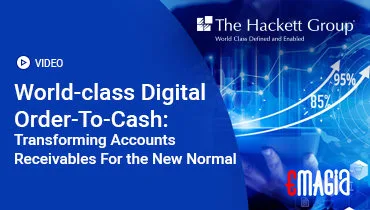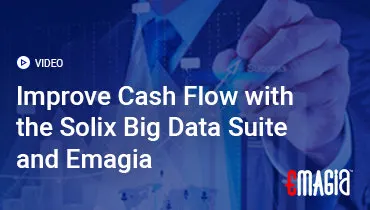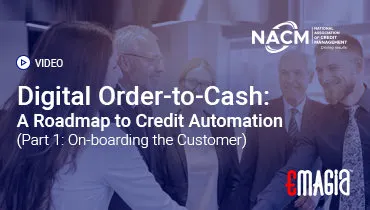When an organisation adopts E-Invoicing to Govt Agencies, it embeds structured invoice submission into government frameworks so that commercial invoices are validated, registered, and reported in real time. This transformation—from traditional invoice issuance to submitting via an e-invoice portal or Invoice Registration Portal (IRP)—brings substantial operational efficiency, compliance clarity and shorter invoice cycles.
Introduction: Why Government e-Invoicing Matters
Over recent years many jurisdictions have implemented or proposed mandates that require businesses to issue and/or report invoices electronically. These electronic invoicing government initiatives aim to reduce fraud, improve tax visibility and streamline trade reporting. For suppliers and reporting organisations, adapting to the requirement is both a compliance necessity and an opportunity to modernise finance processes.
Regulatory Framework for e-Invoicing to Government Agencies
Understanding the mandate concept
The concept of a mandate means that governments specify how invoices must be created, submitted and accepted in digital form. This includes the format, submission channel and validation rules. According to e-invoicing mandate resources, many countries now require structured data instead of just PDF invoices.
Key components: IRP, IRN and validation
The Invoice Registration Portal (IRP) is typically the government-orchestrated system that receives invoice data, performs validations and issues an Invoice Reference Number (IRN). That IRN or digital token ensures that each invoice is uniquely registered and traceable.
Roles of digital signature and QR code in e-invoice reporting
An e-Invoice digital signature and/or embedded QR code often complement the IRN. They guarantee authenticity, integrity and ease of verification for the buyer or government agency.
Scope and thresholds of mandates
Mandates vary: some cover B2G (business-to-government) only, others extend to B2B (business-to-business). Some jurisdictions apply a turnover threshold, others apply to all suppliers above a certain size. For example, India’s phased rollout lowered thresholds over time.
Phased rollout example
Understanding how phases work helps organisations plan. Early phases may target large suppliers or specific industries, while later phases widen scope to smaller suppliers and even B2C formats.
Technical Requirements and Infrastructure
Standardised data formats and schemas
Structured invoice submission often requires adhering to a prescribed schema (JSON, XML) with defined fields such as tax IDs, item codes, amounts, supplier/buyer details. This ensures interoperability with the government portal.
Mandatory data fields for reporting
- Supplier and government agency identifiers
- Invoice number, date, tax amount, total amount
- Item details or service descriptions with codes
- Tax breakdown, jurisdiction codes
- Digital signature or authentication token
Submission channels: API, portal upload, service providers
Many jurisdictions support e-invoice API integration from supplier systems directly to IRP. Others allow batch file uploads or portal entry. Some businesses use certified service providers to handle submission on their behalf.
Integration modes comparison
- Direct API link from ERP/billing system to IRP
- Batch or CSV upload for low-volume suppliers
- Portal manual entry as fallback
- Managed service provider handling submission and compliance
Validation logic of the IRP
The platform performs e-invoice validation to check schema correctness, duplicate invoices, required data completeness, and tax logic. Rejections must be managed swiftly to avoid operational disruption.
Operational Workflow of E-Invoicing to Government Agencies
End-to-end process overview
The workflow for submitting an e-invoice to a government agency typically includes invoice creation, data mapping, submission to IRP, validation, receipt of IRN, and finally delivery to the buyer or agency. Each step must be choreographed and tracked.
Step-by-step breakdown
- Create invoice in supplier system including required compliance fields
- Submit invoice data to the IRP (via API, upload or provider)
- IRP performs validation and returns an IRN and digital signature
- Supplier stores the registered invoice and delivers to buyer or agency
- Buyer or government agency uses the IRN/QR for acceptance, payment or auditing
- Tax authority receives the data for compliance, audit, analytics and reconciliation
Error handling and re-submission practices
When an invoice is rejected, organisations must capture rejection reasons, correct anomalies and resubmit quickly. Building robust error-handling workflows reduces delays and classification risk.
Benefits of Government-Mandated E-Invoicing
For organisations and suppliers
Adopting structured e-invoicing offers several benefits: fewer manual interventions, lower dispute volumes, improved invoice accuracy and faster payment cycles. These derive from the consistent format and integrated submission process.
For government and public sector agencies
Governments gain enhanced transparency, reduce fraud, improve tax reconciliation and achieve operational efficiency. Around 80+ jurisdictions have implemented or are implementing mandates.
Illustrative outcome metrics
Suppliers in India reported significant reduction in rejection rates and faster invoice turn-round after switching to the IRP model. Some reported up to 30-40% cycle time reduction in submission and approval steps.
Challenges and Risks in Implementation
Legacy systems and workflow change
Many organisations face hurdles because their billing or ERP systems were not designed for structured data submission. Upgrading systems and processes for e-invoice workflow automation can require significant investment and change management.
Data quality and completeness issues
Incorrect tax IDs, missing item codes, formatting errors or mismatched values lead to rejections. Without disciplined master data management and normalisation, the risk of non-compliance or delays increases.
Compliance risk and penalties
Failing to comply with government e-invoicing requirements can lead to invalid invoices, delayed payments and fines. For example, Indian mandates treat non-registered invoices as invalid.
Implementation Best Practices for E-Invoicing to Government Agencies
Project planning and stakeholder alignment
Successful programs begin with establishing clear scope, aligning cross-functional teams (tax, IT, finance, procurement) and mapping key deadlines. Early stakeholder buy-in mitigates risk from downstream disruptions.
Key early-stage tasks
- Determine applicability (which invoices, thresholds and agencies)
- Assess current billing/invoicing systems and data readiness
- Select submission mode (API, e-invoice portal, managed service)
- Create test environments and run pilots before go-live
Master data readiness and process harmonisation
Ensuring accurate supplier and buyer IDs, item codes, tax codes and bank details supports clean submission flows. Harmonise account codes, billing formats and approval workflows before connecting to the IRP.
Governance, audit trail and compliance monitoring
Set up monitoring dashboards for submission volumes, rejection causes, turnaround time and compliance metrics. Maintain records of registered invoices, IRNs, QR codes and digital signatures for audit readiness.
Future Trends and Emerging Developments
Expanding scopes and global convergence
More jurisdictions are targeting B2G and B2B invoices, and frameworks such as PEPPOL support cross-border standardisation of e-invoicing. Even in countries without IRP mandates, the trend toward structured invoice exchange is growing.
Analytics, AI and advanced compliance features
With greater volume of structured invoice data, organisations leverage advanced analytics, and artificial intelligence to identify anomalies, forecast payment behaviour and detect fraudulent activity—enhancing invoice integrity and operational insights.
Blockchain, digital identities and real-time tax integration
Some early-adopter countries are piloting blockchain-based invoice traceability and real-time tax deduction integrations. These innovations promise deeper transparency and automation in the invoice-to-payment lifecycle.
How Emagia Enhances Compliance, Efficiency and Insight
Emagia provides a purpose-built solution for businesses implementing e-invoicing to government agencies. The platform supports submission, validation, monitoring and analytics, enabling compliance with minimal overhead and risk.
- Pre-built connectors for popular IRPs and global jurisdictions
- Real-time submission dashboards for monitoring and error resolution
- Automated tracking of IRN issuance, QR codes, and invoice status
- Built-in analytics for submission success, cycle times, rejection trends
- Integration with ERP, billing systems and tax-return platforms
With Emagia you can turn the compliance journey into a strategic advantage—reducing manual invoice processing, minimising rejection risk and speeding time-to-cash while meeting regulatory demands and audit readiness.
Frequently Asked Questions (FAQs)
What is e-invoicing to government agencies?
It refers to the process where supplier invoices are submitted electronically via a government-approved submission channel (for example an Invoice Registration Portal (IRP)), validated, and issued an Invoice Reference Number (IRN) before being delivered to the buyer or tax authority.
Why do governments mandate e-invoicing?
Mandates are introduced to combat fraud, reduce invoice errors, ensure tax and trade visibility, improve payment transparency and automate compliance. As structured invoice data flows directly to tax authorities, reconciliation improves and manual processes shrink.
How do I know if my invoices need to go through an IRP?
Check your local jurisdiction’s regulations. Key indicators include whether your business issues invoices to government agencies (B2G), meets turnover thresholds, or is required to follow a prescribed submission format for structured invoices. If yes, then you may need to use an e-invoice portal or IRP.
What is an IRN and why is it important?
An Invoice Reference Number (IRN) is a unique identifier issued by the IRP after successful invoice submission and validation. It makes the invoice traceable and compliant. Without an IRN the invoice may be considered invalid for tax or payment purposes.
What are common rejection reasons and how to prevent them?
Common rejection reasons include invalid tax IDs, missing required fields, duplicate invoice numbers, mismatched amounts, and schema errors. Prevent them by verifying your master data, aligning data format, and conducting sandbox tests in advance.
Will e-invoicing speed up payments?
Yes, often. Because invoice data is verified and registered with government systems, buyers receive earlier confirmation of validity and fewer disputes arise. Combined with automation, this can shorten the time from invoice issuance to payment, though payment terms still depend on buyer policies.
How should I prepare for an upcoming e-invoicing mandate?
Begin by auditing your current invoicing workflows, ensuring your billing system can produce structured data, evaluating submission modes (API or portal), testing in a sandbox, training staff, and setting up monitoring dashboards for acceptance rates and rejections.
Conclusion
Adopting E-Invoicing to Govt Agencies is a regulatory reality in many regions, yet it also offers operational and compliance advantages. By planning carefully, leveraging the right technology, focusing on data quality and aligning business workflows, organisations can turn a mandate into a competitive advantage.
Whether you issue thousands of government-agency invoices a year or are preparing to comply ahead of deadline, taking a structured, phased approach means you achieve compliance while strengthening your invoice-to-payment lifecycle, improving invoice accuracy and accelerating your financial processes.



